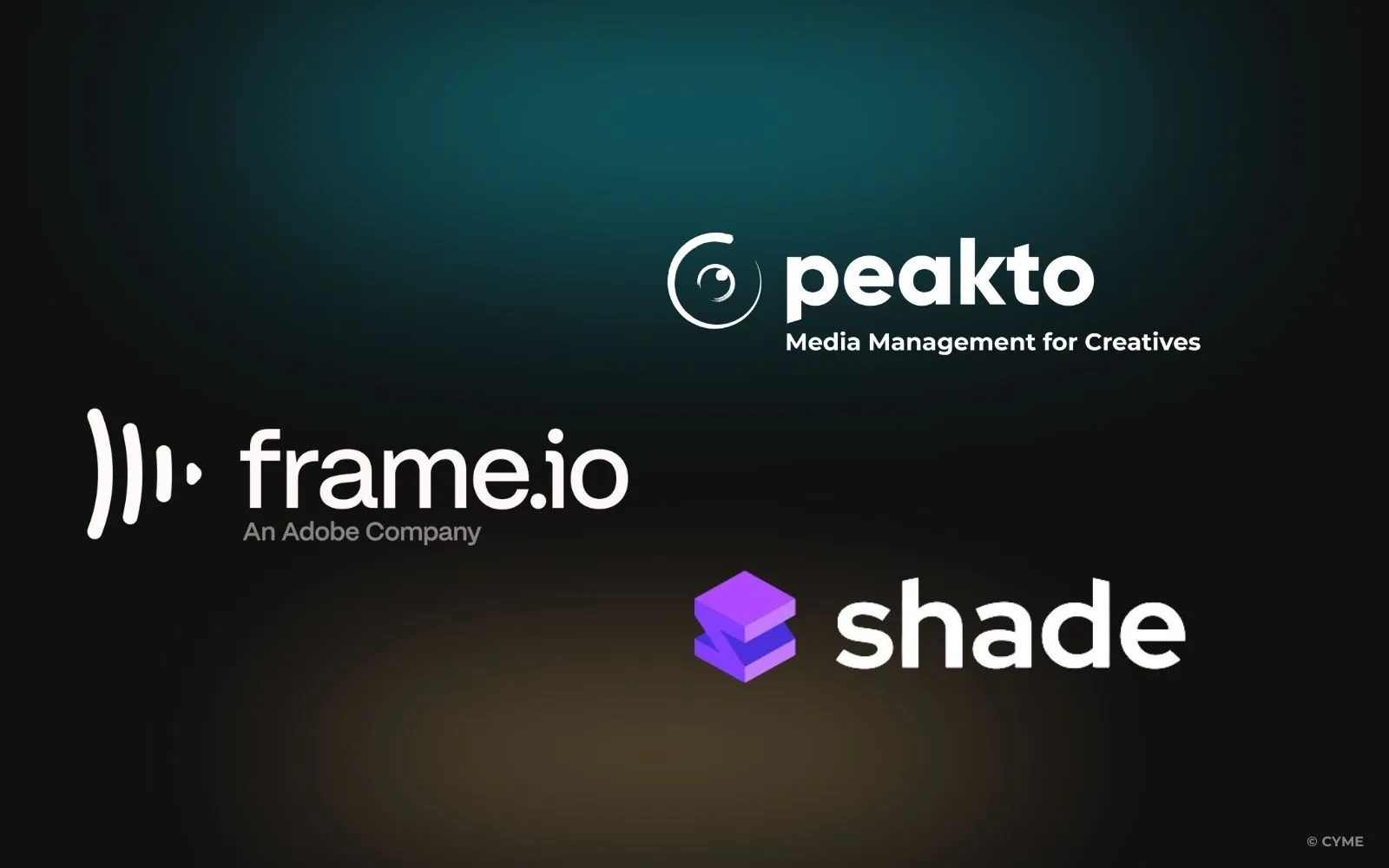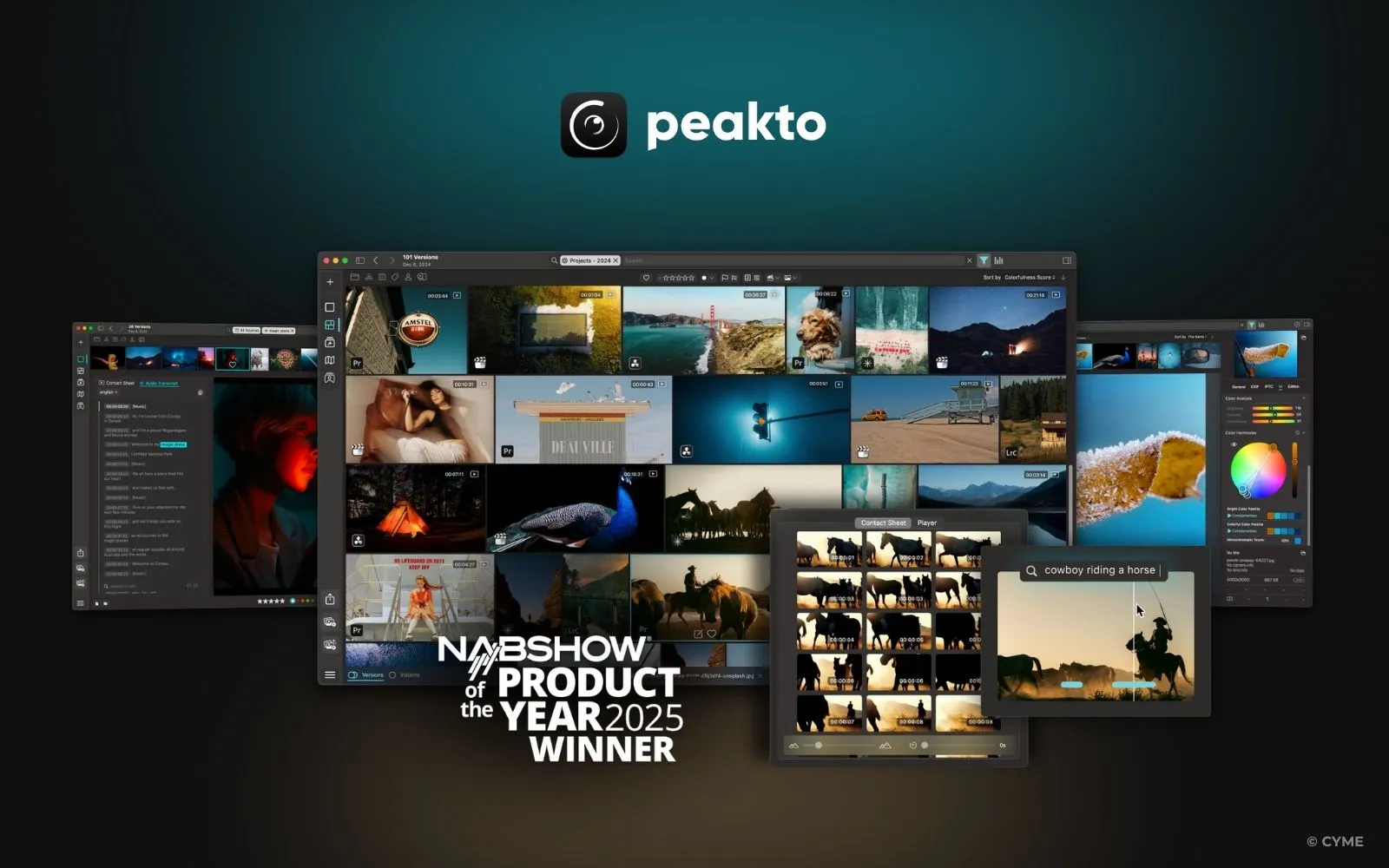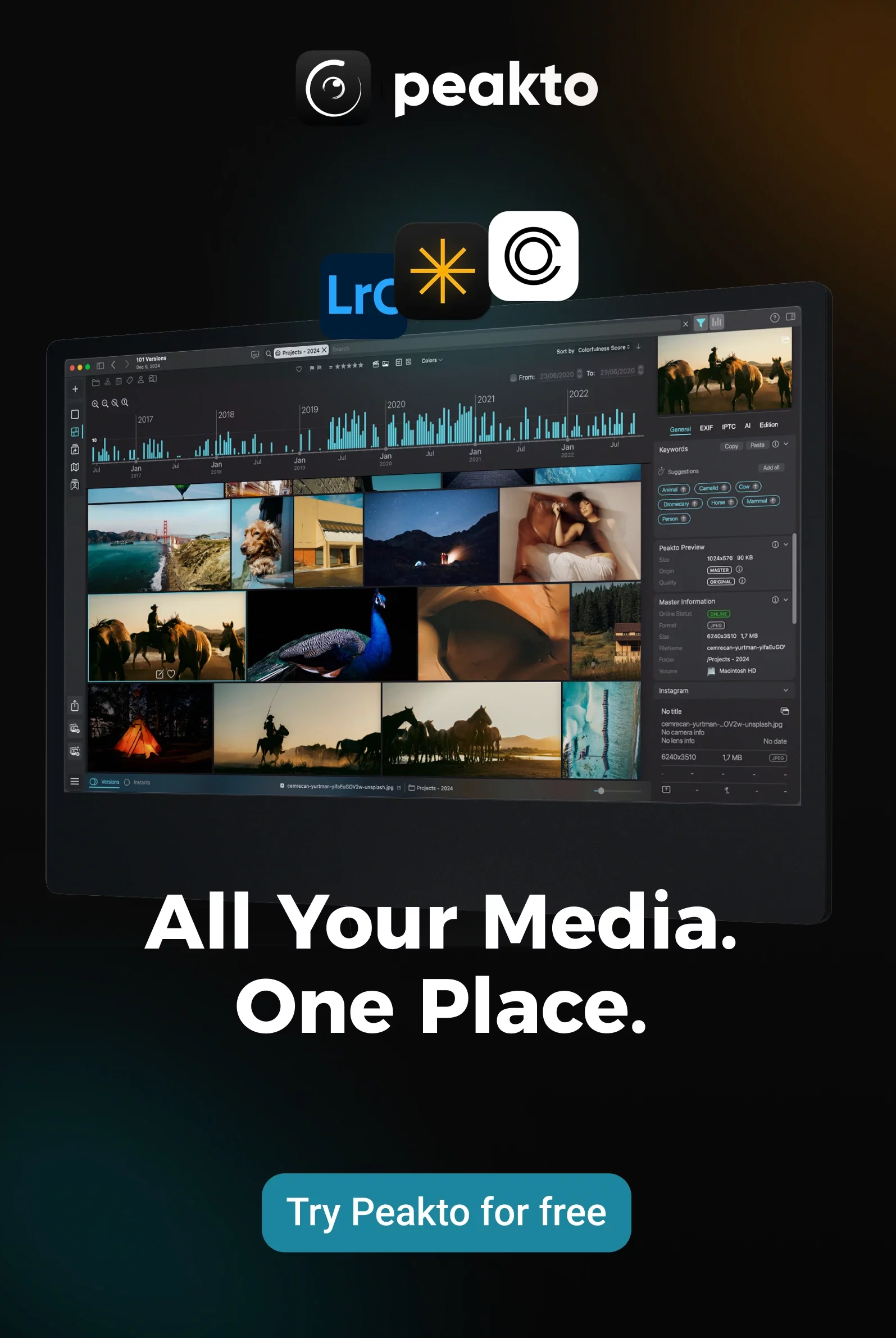If you’re a photographer, videographer, or content creator, your most valuable assets aren’t spreadsheets or serial numbers—they’re your visuals. Your images, your clips, your creative history.
But as your media library grows, so does the challenge of managing it. You work across tools, projects, and years—Lightroom here, Apple Photos there, and folders full of RAWs and MOVs in between. That’s where the best digital asset management software comes in: not just to store your files, but to help you find, organize, and reuse them with ease.
If you’re looking for long-term strategies to keep your files safe, start with our best ways to store photos and videos.
Let’s dive into why creative professionals need a different kind of asset management—and how tools like Peakto are reimagining what that system should look like.
What Is Asset Management Software?
Asset management software is a system designed to help you track and manage assets – both physical and digital – throughout their lifecycle. In plain terms, it creates a single source of truth for all your asset information. This means you can track equipment, devices, tools, and even digital assets (like documents, images, or software licenses) in real-time, usually via a cloud-based platform accessible on web and mobile.
By logging each asset’s details (purchase date, location, user assignment, maintenance history, etc.), an asset management system ensures you always know what you have, where it is, who is using it, and how it’s being used.
Teams often struggle when using clunky spreadsheets or scattered data to manage assets. That’s where asset management software shines – it provides an easy and customizable way to organize asset data and automate many manual tracking tasks.
Modern asset management solutions offer features like barcode/QR code scanning for quick inventory audits, mobile app access for updating asset status on the go, and centralized dashboards to get a complete overview of your asset inventory. In short, it’s a comprehensive tool to take control of your assets, reduce human error, and improve efficiency across the board.
Traditional Asset Management vs Digital Asset Management
Most people think “asset management software” is for IT teams or factories managing machines, licenses, or office equipment. And in many cases, that’s true. Traditional asset management systems—like IBM Maximo, SAP, or Freshservice—were built to serve enterprise infrastructure: tracking maintenance cycles, auditing software licenses, and managing physical assets across departments.
Digital asset management (DAM), on the other hand, is designed for a completely different kind of user: creatives. DAM tools focus on visual content—images, videos, graphics, media files—and provide ways to organize, access, preview, and repurpose that content in a streamlined, searchable environment.
For creatives, DAM should feel natural, fast, and media-centric—not just functional.
What to Look For in a Media Asset Management Solution
When your assets are media files, not hardware, you need software that’s built with the creative workflow in mind. A great digital asset manager should:
- Unify your files across drives, apps, and folders—without duplicating or importing
- Support all major formats (RAW, JPEG, MOV, HEIC…)
- Let you search by visual content: faces, themes, or even natural language
- Offer high-resolution previews, not just metadata
- Work offline and recognize disconnected drives
- Respect your existing structure and give you freedom of organization
Top 3 Digital Asset Management Tools of 2025
The DAM space in 2025 is evolving quickly, with a few standout tools leading the way for creative professionals and teams. Here’s a breakdown of three of the most talked-about platforms this year:

1. Peakto: Digital Asset Management for Your Media
Peakto is a digital asset management platform designed specifically for visual storytellers—photographers, videographers, content creators, and studios. It brings structure, speed, and intelligence to your media library, no matter how fragmented or chaotic it may be.
At its core, Peakto uses advanced AI to make your files easier to find and organize. It can recognize faces, locations, and objects automatically, and even lets you search with natural language prompts—like “children playing in snow” or “sunset over the ocean.” Without any manual tagging, your entire archive becomes instantly searchable. It’s a quiet revolution in how creatives interact with their past work.
Unlike traditional asset managers that require you to import and duplicate files, Peakto connects directly to your existing libraries—from Lightroom, Apple Photos, Capture One, Luminar, and even folder-based structures.
Its interface is visual and intuitive, offering timeline views, map-based exploration, and smart collections that adapt to your workflow.
2. Frame.io
Frame.io, developed by Adobe, has become a staple for video editors and production teams. It’s best known for enabling collaborative review and approval workflows, with real-time comments, versioning, and tight integration with Premiere Pro. If your main challenge is fast-paced production and remote feedback, Frame.io offers a smooth, cloud-first experience.
That said, Frame.io is more of a collaboration layer than a full DAM. It’s not built for long-term archiving or organizing tens of thousands of photos or clips across multiple drives. For project-based review, it excels—but for comprehensive media management, you’ll need something more flexible.
3. Shade
Shade is a digital asset management tool focused on brand management and marketing visuals. It shines in environments where maintaining brand consistency is essential—like design teams, content marketers, and agencies managing campaigns. Shade offers metadata tagging, version control, and permissions, all with a polished interface.
However, Shade is built around a centralized cloud model, and doesn’t offer strong offline or hybrid support. It’s less suitable for users with massive local libraries, creative archives, or disconnected workflows. For fast-paced brand teams, it’s a win. For independent creatives? Maybe not.
Who Should Use Peakto as a Creative Asset Management Tool?
What sets Peakto apart is that it’s built for creatives. It’s tailored for those whose day-to-day work revolves around visual storytelling, large libraries, and scattered media collections. It runs offline to protect your privacy, yet remains lightning fast—even with libraries containing hundreds of thousands of assets.
Whether you’re trying to make sense of decades of images, searching for specific content for a client, building a deliverable gallery, or simply cleaning up duplicates and versioned edits, Peakto helps you reclaim control. It doesn’t just store your work—it gives it structure, context, and clarity.

1. Professional Photographers
If you shoot weddings, portraits, landscapes, or events, you know how fast the images pile up. Peakto helps you manage massive multi-catalog archives, making it easy to retrieve past sessions, track edited vs. unedited versions, and create smart albums. With support for all major RAW formats and editing workflows, it becomes your central hub—without replacing your editing tools.
Already struggling with a cluttered photo library? Our guide on how to stop photos from taking up too much storage offers tips to get your space back without losing precious memories.
2. Videographers and Filmmakers
Footage across multiple drives? Final cuts saved next to drafts? Peakto helps you make sense of your video library. It offers fast previewing, metadata extraction, and thematic search—so you can find the right scene, moment, or B-roll without scanning clip by clip. Ideal for documentary makers, YouTubers, and production teams working with high volumes of media.
3. Creative Teams and Studios
Collaborating across time zones or departments? Peakto allows multiple users to access a unified media library without duplicating files. Art directors, editors, and content marketers can browse, comment, and select visuals without opening heavy editing software. This reduces friction and accelerates delivery timelines.

4. Archivists & Visual Historians
Whether you’re digitizing family albums, managing institutional photo records, or organizing a personal life archive, Peakto’s offline support and non-destructive workflow ensure that your history is preserved, searchable, and accessible—without the cloud.
5. Hybrid Creators with Fragmented Libraries
Maybe you use Lightroom for some projects, Photos for others, and folders on an external SSD for everything else. Peakto brings it all together in one visual interface, making it easier to manage assets across platforms, devices, and file types.
Compatible with:
- Adobe Lightroom
- Apple Photos
- Capture One
- Luminar Neo
- iMovie, Final Cut Pro, Premiere Pro
If you’re looking for a day-to-day solution to manage your creative library, Peakto is made for you. And if your needs are simpler—like managing images locally on macOS—you might find value in our guide to the best picture manager on Mac.
The Best Asset Management Software Isn’t One-Size-Fits-All
There are many asset management systems out there. But most were built for managing hardware, licenses, or IT networks. If your assets are creative—photos, videos, visual stories—you need something else. Peakto is that something else.
It combines the power of a modern asset management platform with the intuition of a creative assistant. You stay in control. You know where your files are. You find what you need. You create without friction.
If you’re tired of fighting your folder system and ready to enjoy your creative archive again, give Peakto a try and see what a digital asset management looks like when it’s actually built for creatives.











